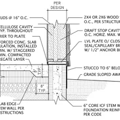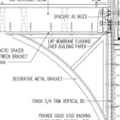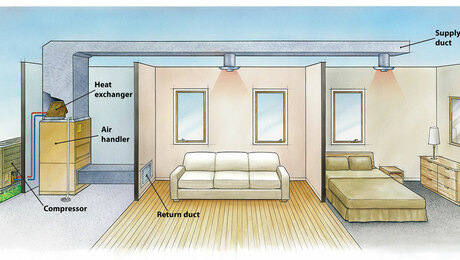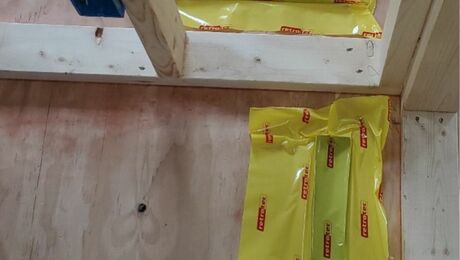Efficient exterior wall
Hi,
I have been following this site for some time now as we are about to build a house in Toronto (climate zone 6A), Ontario, Canada. This is my first email to the Green Building Advisor forum.
I would like to know your opinion on the following exterior wall design. From outside to inside:
– Exterior cladding (stucco or brick veneer)
– Drainage plane
– Rigid foam (EPS) max 3″
– Self-adhered vapor permeable water and air barrier membrane (Blueskin VP 100 or Delta Vent)
– Plywood
– 2 x 6 wood framing, 16″ o.c.
– Mineral wool batt cavity insulation (Roxul)
– Gypsum board
Am I missing anything? Can a more cost-efficient, durable design be built for our Toronto climate (winters are cold and summers are humid)?
I appreciate the helpful and knowledgeable comments.
Thank you!
Nashid F
GBA Detail Library
A collection of one thousand construction details organized by climate and house part









Replies
Nashid. Have you priced dense-packed cellulose or fiberglass as an alternative to Roxul?
Nashid,
You could probably save money by skipping the vapor-permeable peel-and-stick. You can get a fairly tight air barrier by just taping the seams of your wall sheathing.
I used peel-and-stick over the rim joist section only and 3M tape on the OSB seems. That worked well enough to get to 0.82 ACH50.
Steve: I haven't priced dense-packed or fiberglass - I have had bad experience with the latter. The fiberglass batts never dried out behind the drywall and led to mold build-up ...
Martin: I do feel a little hesitant to skip the vapor permeable membrane due to what you had mentioned that rigid foam barriers may shrink and the tape seal may not be durable... (here below is the link about using rigid foam as WRB)
https://www.greenbuildingadvisor.com/blogs/dept/musings/using-rigid-foam-water-resistive-barrier
Thanks again!
Nashid,
What was causing the fiberglass batts to get wet?
Malcolm: The finished basement had been insulated with fiberglass. Dampness in the exterior foundation walls most likely gets the batts wet.
Nashid,
Yeah - that's quite common to see in basements in Ontario. Usually moisture on the vapour barrier too.